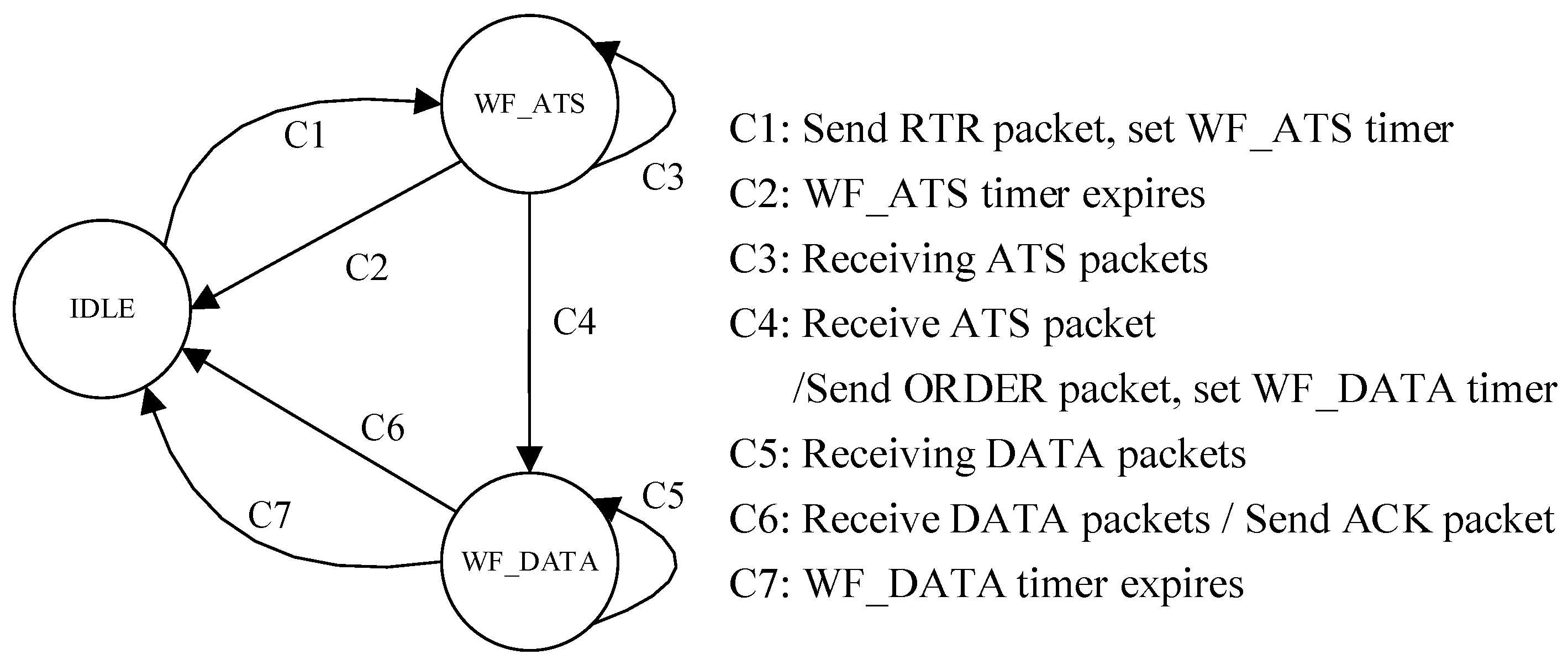

OFDM can convert selective fading acoustic channels into parallel and independent acoustic subchannels to achieve flat fading.

Orthogonal frequency division multiplexing (OFDM) is one of the most promising physical layer solutions for underwater acoustic communication. The MAC protocol for UAWSNs should overcome many obstacles, such as energy consumption, transmission delay, and time synchronization, which pose considerable challenges to its design. Unfortunately, most existing terrestrial MAC protocols do not consider the characteristics of underwater channels and therefore cannot be applied to underwater acoustic wireless sensor networks directly. The function of the MAC layer protocol is to manage and control the communication channel shared by multiple nodes to avoid collisions and maintain reliable transmission conditions. Designing a reliable and efficient MAC protocol is one of the most important issues for underwater acoustic wireless sensor networks. In UAWSNs, a media access control (MAC) protocol is used to allocate limited acoustic wireless channel resources among network nodes. Therefore, the application of UAWSNs in shallow water still faces great difficulties. The particularities of underwater acoustic propagation lead to the unique characteristics of underwater acoustic channels, such as long and variable delays, long multipath delay spread, and limited bandwidth. Due to the influence of time and weather, there would be serious time-varying effects on the acoustic channel. The propagation speed of sound waves in water is low (about 1500 m/s), is greatly affected by the flow of seawater, and causes serious Doppler effects. However, due to the propagation of the sea surface and bottom reflection in shallow water, their use would lead to a serious time-varying multipath effect. Acoustic waves, which have been effectively applied to deep-water point-to-point communication, are the most plausible transmission medium for underwater wireless communication. The propagation loss of electromagnetic waves in seawater is serious and prevents transmission over long distances under the sea. Underwater acoustic wireless sensor networks (UAWSNs) have received tremendous attention in recent years since they can bring about significant benefits in many applications, such as tsunami warning, environment monitoring, disaster prevention, assisted navigation, and resource exploration. Simulation results show that the performance of OSPG-MAC is better than that of classic underwater MAC protocols, including SFAMA and T-Lohi. To maximize the total throughput on each subchannel, a bit and power allocation algorithm for the protocol is proposed, termed the OSPG-MAC algorithm. To make it easier to allocate subcarriers and avoid conflict, we group all the subcarriers into fixed subchannels in advance and allocate them in terms of these subchannels. In this paper, we propose an OFDMA-based subcarrier pregrouping MAC protocol for UAWSNs, termed OSPG-MAC. Orthogonal frequency division multiple access (OFDMA) is a special case of OFDM-based multicarrier modulation in which multiple user symbols are transmitted simultaneously using different subcarriers with overlapping orthogonal frequency bands.

It is a great challenge to design suitable MAC protocols for UAWSNs because of the specific characteristics of underwater acoustic channels, such as low communication rates, large propagation delays, and limited available bandwidth. In underwater acoustic wireless sensor networks (UAWSNs), designing media access control (MAC) protocols is highly challenging because of their significant influence on network performance.


 0 kommentar(er)
0 kommentar(er)
